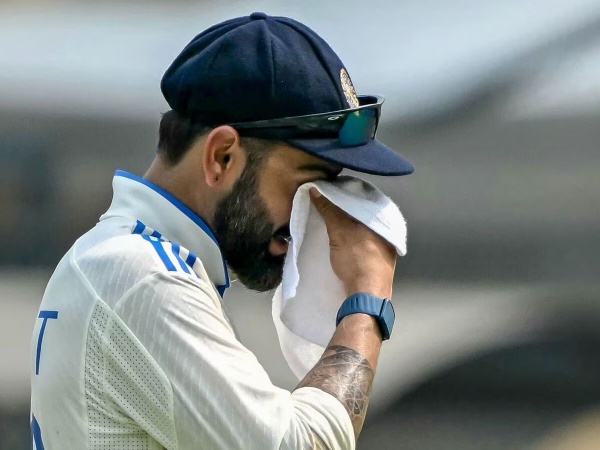views : 764
4 Min Read
Virat Kohli may find it helpful to stop over-thinking his problems outside the off stump
Virat Kohli’s diminishing returns in Test cricket have captured more attention than another delay in the Space Docking Experiment featuring two Indian satellites, Chaser and Target or, for that matter, prospects of India’s lowest Gross Domestic Product in four years. His batting has dominated newsprint, air waves and countless gigabytes on digital platforms.
To be sure, he is a contemporary illustration of an athlete eager to discover a way to end his woes. Australian pace bowlers induced him to edge catches with such unfailing monotony in the recently concluded Test series Down Under that his batting has become the subject of national debate. His fans and critics have been engaged in battles of their own.
It is not as if Virat Kohli looked uncomfortable or ungainly at the batting crease even when his scores in Test cricket have dwindled over the years. Even if you consider the unbeaten 100 in Perth as an aberration, as recently as in the Boxing Day Test in Melbourne, he showed a willingness to slog it out without indicating the thoughts that possibly cluttered his mind.
However, in trying to wriggle out of the situation, he seems to sink deeper into it. He has tried a range of things – change stance, taking guard inches in front of the batting crease, tapping the bat or not – without any apparent success. The numbers trotted out are revealing and need no repetition here.
Sometimes, athletes – and indeed all humans – tend to actually overthink when wanting to find a solution to a problem. Often athletes seek solutions so keenly that they do not give their minds adequate opportunities to rest. In that event, they find themselves driving further down the dark alley of no return. It is at such times that a quiet conversation comes in handy.
India captain Mohammed Azharuddin made the most of a brief conversation with ML Jaisimha, his predecessor as a debonair Hyderabadi legend, in Chandigarh in 1993. Azharuddin was on notice in the wake of an unproductive tour of South Africa, but that chat helped him modify his grip with success. He made 182 in the Calcutta Test and extended his stint as skipper.
A decade later, Sourav Ganguly sought Greg Chappell’s guidance with his batting. The Indian captain worked with the Australian batting legend in Sydney, re-engineering his technique and mental approach. It helped Sourav Ganguly immensely and regain his primacy as one of the world’s top left-handed bats.
Of course, Virat Kohli will have access to the best minds in the game who can help him resolve technical shortcomings that has crept into his batting, perhaps because of a reduced eye-hand coordination with his growing years. He will also have access to mind trainers who can assist him in regaining his poise.
High performance coaches have been known to over load the brain, asking the players to do several things at once during training to help them develop mental flexibility and expand the mind to go beyond labels acquired over a period of time. In his case, Virat Kohli may benefit from not ignoring other strokes that can enhance his efficiency at the batting crease.
It is a good thing 36-year-old Virat Kohli is not apparently living in denial of the challenge staring him in his face. On the contrary, he may be spending far too much time in trying to find a way to beat the problem that the whole Indian cricket community has concerned itself with for some time now.
Indeed, as if the extreme internal chatter is not enough, there is such high decibel and animated external conversations analysing a problem that find a way of getting to the athlete concerned. Even if the athlete is unwilling to pay that any attention. It may help to acknowledge that external noise without letting it affect the decision-making process.
Only he will know how much attention he is paying to his problem outside the off stump, but perhaps he can get his mind to focus on some other aspects of cricket and stop worrying too much about the issue. He may benefit from letting the mind think of other things in batting than just resist the temptation that come along with deliveries wide of his off stump.
Such a suggestion may sound preposterous to the pundits who have played at the highest level and are offering well-meaning insights. But having tried a great deal in the past few months, Virat Kohli may find it useful to stop over-thinking and over-analysing as he transitions in his cricket career. The coin may drop on its own. And the clock may yet turn back.
